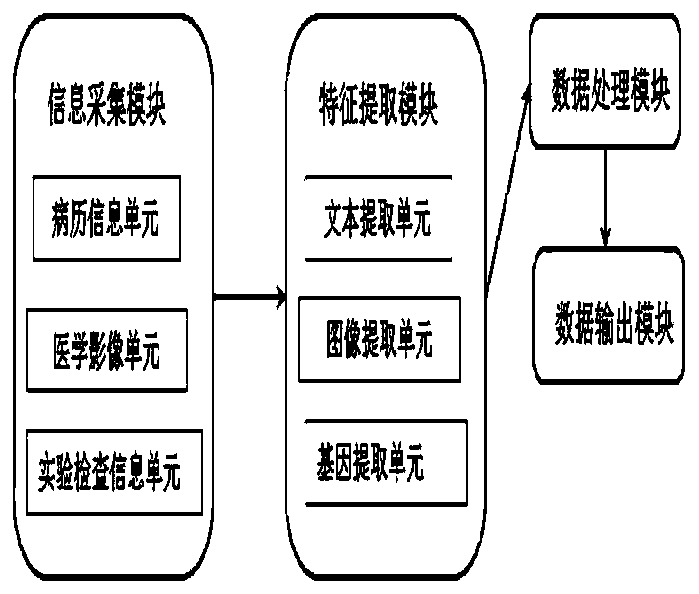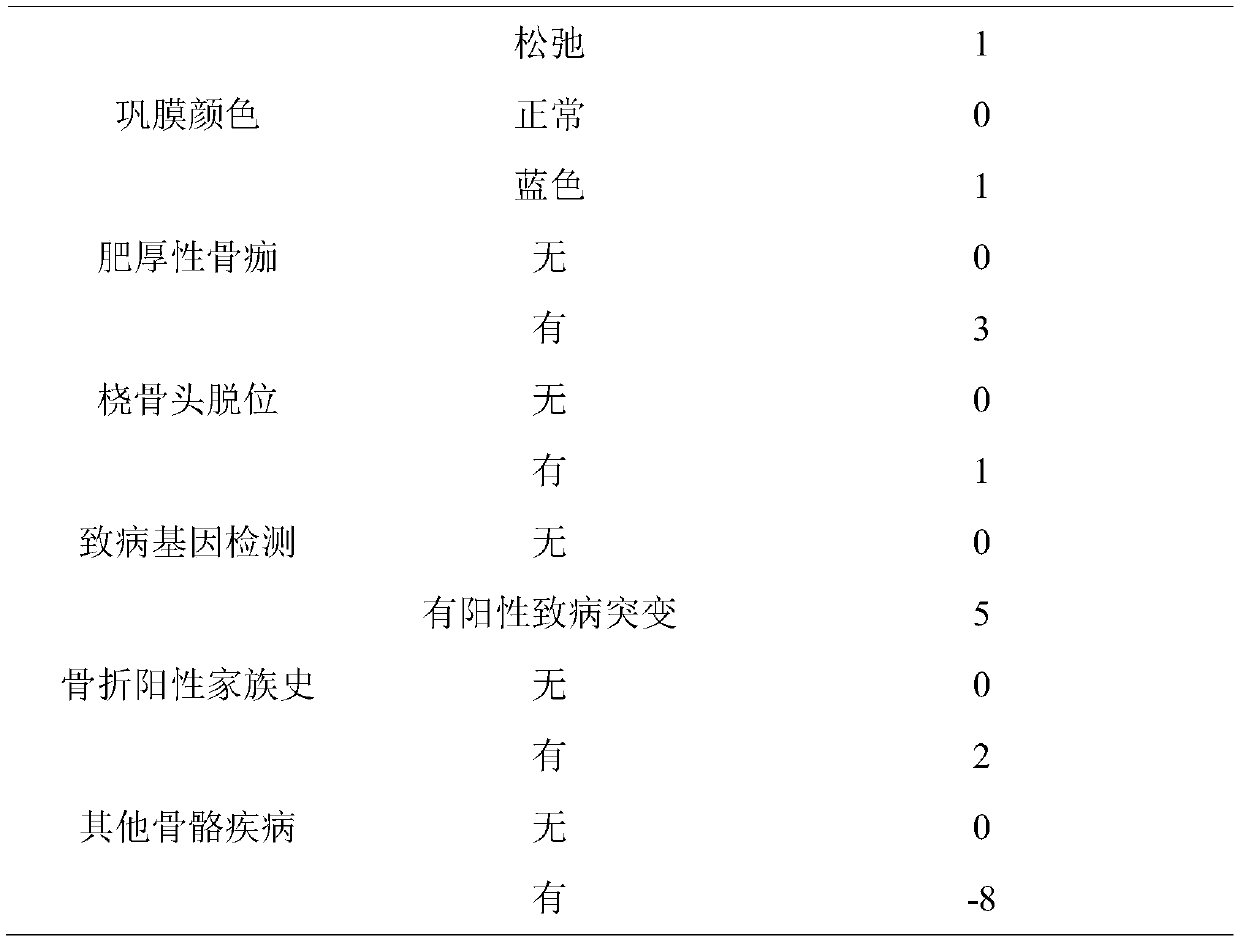Computer intelligent diagnosis system for osteogenesis imperfecta
A technology for osteogenesis imperfecta and intelligent diagnosis, applied in the field of biomedicine, which can solve the problems of different clinical phenotypes and unclear mechanisms.
- Summary
- Abstract
- Description
- Claims
- Application Information
AI Technical Summary
Problems solved by technology
Method used
Image
Examples
Embodiment 1
[0049] Example 1 Correlation Study on Genotype and Phenotype of Osteogenesis Imperfecta Patients
[0050] 1. Research object
[0051] From December 2008 to December 2018, 380 patients with osteogenesis imperfecta were treated in the Department of Endocrinology, Peking Union Medical College Hospital.
[0052] Inclusion criteria:
[0053] a) Fracture family history (+): more than one fragility fracture + lumbar spine (LS) or hip (FN, TH)
[0054] BMD is below -1 SD in the same race, age, and sex (Z value ≤ -1)
[0055] b) If family history of fracture (-): history of fragility fracture + more than 1 typical extraskeletal manifestation (blue sclera, hearing loss, dentin hypoplasia, and joint ligament laxity)
[0056] Exclusion criteria:
[0057] Combined with other genetic metabolic bone diseases, suffering from diseases affecting bone metabolism, or recently receiving drugs that affect bone metabolism
[0058] 2. Collection of clinical data
[0059] All patients were asked...
Embodiment 2
[0086] Example 2 Construction of Osteogenesis Imperfecta Risk Assessment Model
[0087] This study will be based on previous studies on the clinical phenotype spectrum and gene mutation spectrum of a large sample of OI patients, and the age of onset, family history of positive fractures, number of fractures, blue sclera, skeletal deformities, dentin hypoplasia, and joint ligament laxity will be compared. Parameters such as hearing loss, hypertrophic callus, radial head dislocation, interosseous membrane calcification, bone density reduction, and positive detection of pathogenic genes were assigned values using bioinformatics methods, and the sum of OI diagnostic values was calculated. In the past large sample of OI patients, the sum of the above-mentioned OI diagnostic parameter assignments of patients with different clinical types was verified, and a mathematical model for OI risk assessment was obtained by establishing a mathematical simulation. In the future, the sum of ...
Embodiment 3
[0093] Example 3 Application of Osteogenesis Imperfecta Risk Assessment Model
[0094] Patient X, who was diagnosed with mild OI, was 11 years old. He had repeated fractures since he was 8 years old. He had fractures of the femur, tibia, and humerus 5 times. His mother had a history of fractures. Clinical biochemical and imaging examinations showed no evidence of other bone diseases. Physical examination Blue sclera (+) was found, and the bone density Z score was -3.5. The patient's local hospital lacked the conditions for genetic diagnosis. According to the above-mentioned computerized intelligent diagnosis model, we can calculate the sum of diagnostic parameter assignments based on the above-mentioned clinical parameters of the patient: number of fractures (4 points) + positive family history (2 points) + blue sclera (1 point) + low bone density ( 3 points) + age of onset (1 point) = 11 points, according to the diagnostic parameters of the computerized intelligent diagnosis ...
PUM
 Login to View More
Login to View More Abstract
Description
Claims
Application Information
 Login to View More
Login to View More - R&D
- Intellectual Property
- Life Sciences
- Materials
- Tech Scout
- Unparalleled Data Quality
- Higher Quality Content
- 60% Fewer Hallucinations
Browse by: Latest US Patents, China's latest patents, Technical Efficacy Thesaurus, Application Domain, Technology Topic, Popular Technical Reports.
© 2025 PatSnap. All rights reserved.Legal|Privacy policy|Modern Slavery Act Transparency Statement|Sitemap|About US| Contact US: help@patsnap.com



